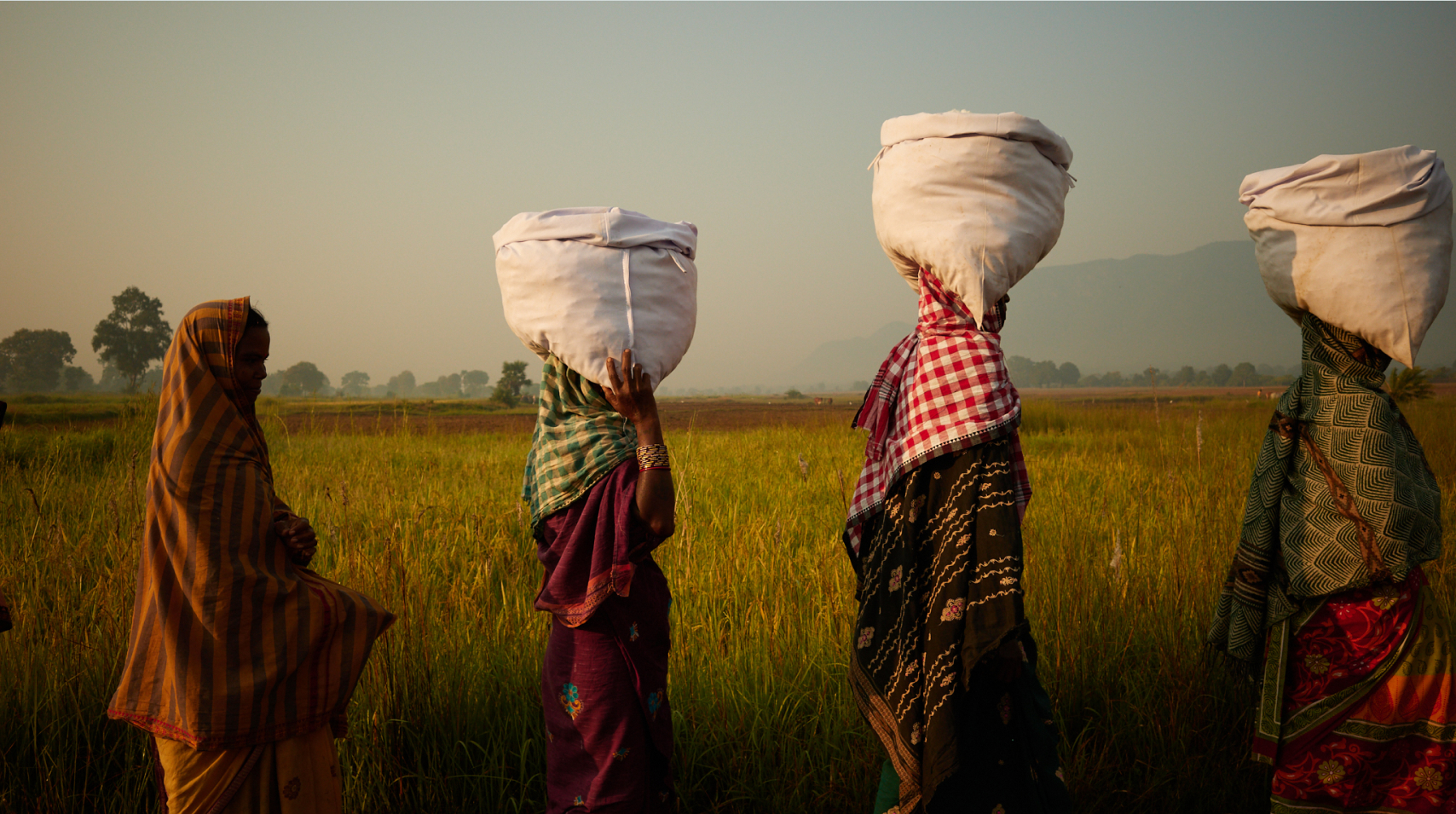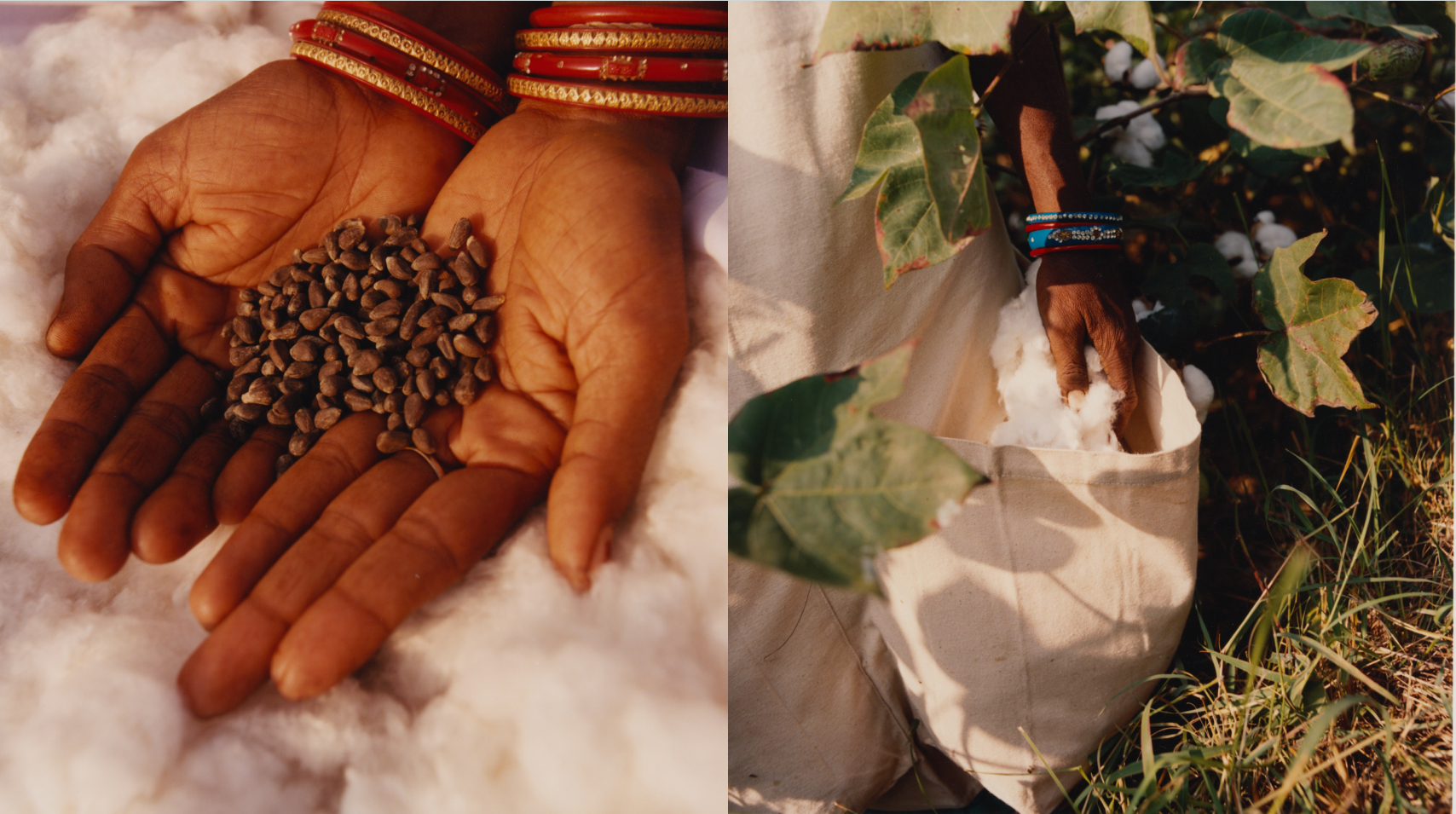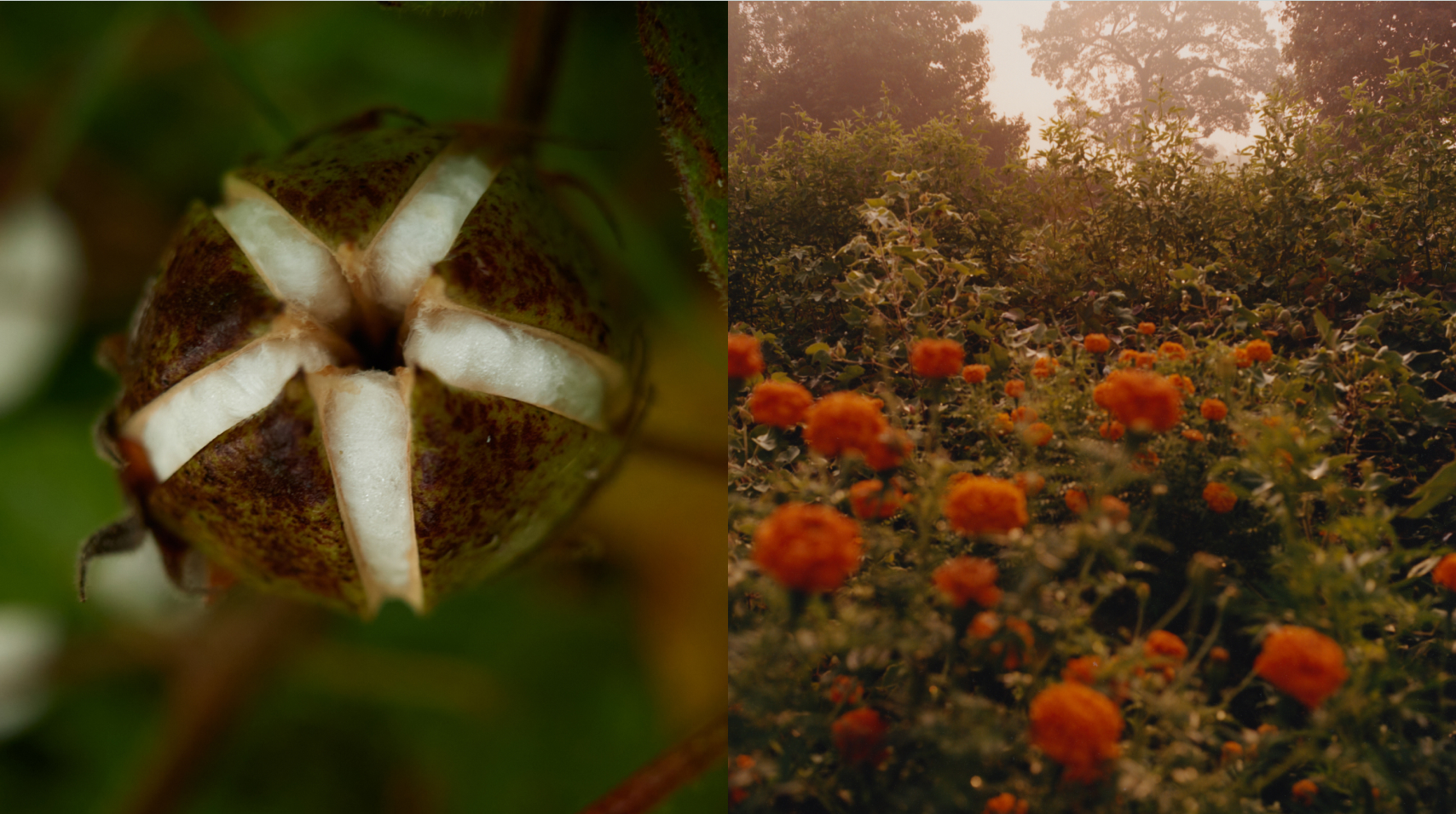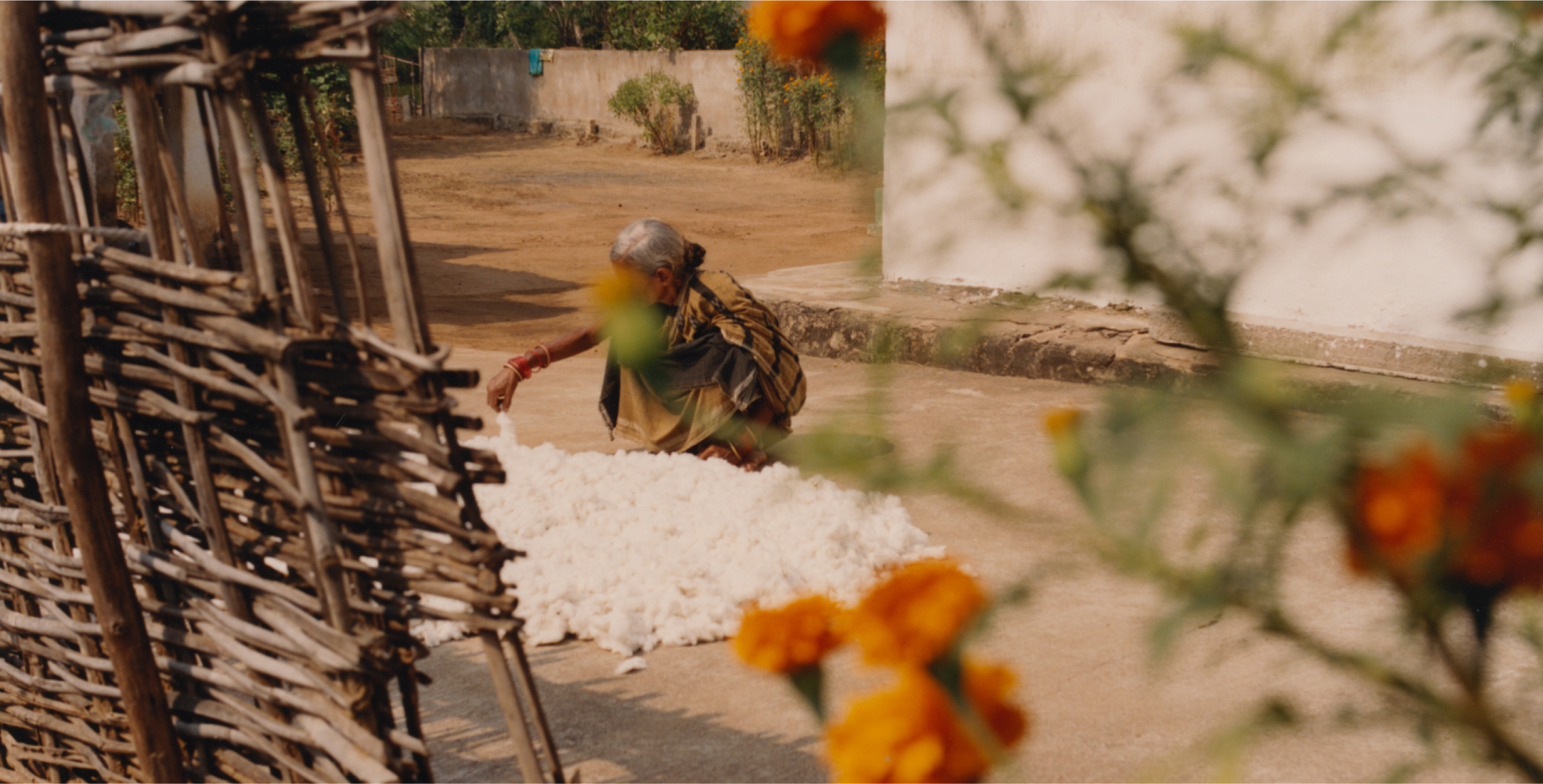Why Is Organic Cotton Bedding Better Than Conventional Cotton?
Since day one at Boll & Branch, we’ve committed to using the finest 100% organic cotton in our home products. It makes a tremendous difference, both to you, in the experience of the product, and to the people who make it, as well as to the planet we call home.
Here, we break down the most important reasons we make our bedding and bath products with organic cotton. Read on, and you won’t want to surround yourself with anything else.

What Is Conventional Cotton?
“Conventional cotton” is non-organic cotton, and describes cotton as it is generally known today: cotton cultivated using traditional agricultural methods, which are often reliant on synthetic chemicals such as pesticides, herbicides, and fertilizers. Also important to note, conventional cotton is generally grown from genetically modified (GMO) seeds. As such, conventional cotton can be produced more cost-effectively and on a larger scale than organic cotton.
What Is Organic Cotton?
Organic cotton is cultivated using environmentally conscious agricultural methods that prohibit the use of synthetic chemicals, pesticides, and herbicides. Instead, organic cotton farming relies on natural processes and beneficial insects for crop protection. Grown from non-genetically modified (non-GMO) seeds, organic cotton is not only more environmentally friendly, it also adheres to stringent ethical standards, ensuring better conditions for farmers and ecosystems.
Why Is The Difference Between Organic Cotton And Conventional Cotton Important?
Conventional cotton is often referred to as "the world's dirtiest crop" because of the environmental toll it takes to grow it. Cotton accounts for 16% of global insecticide use, despite occupying only 2.4% of the world's arable land, according to the Environmental Justice Foundation (EJF).
Let’s take a look at the differences between the two as it relates to people and the environment:

Impact Of Cotton Farming On The Health of Farmers & Workers
As shown above, conventional cotton farming utilizes significant amounts of synthetic pesticides and insecticides. These chemicals can have profound negative impacts on the health of farmers and agricultural workers. Long-term exposure can lead to various ailments including skin disorders, respiratory problems, certain cancers, and neurological damage.
Organic cotton farming doesn't use synthetic pesticides and fertilizers, greatly reducing the health risks associated with chemical exposure for farmers and agricultural workers. This leads to safer working conditions. Because organic cotton farmers experience fewer health issues than conventional cotton farmers, they are able to remain employed longer.
Impact Of Cotton Farming On The Health of Consumers
While conventional cotton is cleaned, and much of the synthetic chemicals applied while it’s farmed are removed, some chemical residue may persist in the cotton fabric. This can lead to skin irritation, rashes, and allergic reactions in some individuals, especially those with sensitive skin.
Organic cotton products are free of chemical residue because no harmful chemicals were used during farming in the first place. This makes organic cotton products a safer option for consumers, especially those with sensitive skin, allergies, or chemical sensitivities.

Impact Of Cotton Farming On The Environment
This is a big topic, so we broke each point down into six main buckets.
To start, conventional cotton farming practices have devastating effects on the environment:
Water Pollution: The heavy use of pesticides and synthetic fertilizers is a significant contributor to water pollution. These chemicals can leach into groundwater or runoff into water bodies, affecting aquatic ecosystems and posing risks to human and animal health.
Soil Degradation: Intensive conventional cotton farming practices, including heavy chemical use and monoculture, can degrade soil health. The reliance on synthetic fertilizers depletes organic matter, disrupts soil microbiota, and contributes to soil erosion, reducing long-term soil fertility.
Biodiversity Loss: Pesticides used in conventional cotton farming don't discriminate between pests and beneficial insects. The widespread death of non-target species can upset the local ecosystem's balance, leading to a decrease in biodiversity. This lack of biodiversity can make the ecosystem less resilient to changes and could potentially lead to the extinction of certain species.
Water Consumption: Cotton is a water-intensive crop, and its cultivation often occurs in regions that face water scarcity. Conventional cotton farming requires large amounts of irrigation water, putting strain on water resources and contributing to water depletion in water-stressed areas.
Air Pollution: Pesticides and herbicides used in cotton farming can contribute to air pollution. These chemicals can be carried by wind and rain into the wider environment, where they can harm wildlife and even enter the food chain.
Increased Greenhouse Gas Emissions: Synthetic fertilizers used in conventional cotton farming release nitrous oxide—a greenhouse gas approximately 300 times more potent than carbon dioxide—contributing to global warming.
These are major environmental concerns. To give a side-by-side contrast of the impact organic cotton farming has, we examine the same topics. Note how organic cotton farming practices not only reduce the environmental toll, but in many ways, these practices provide beneficial roles for the environment:
Reduced Water Pollution: By not using synthetic pesticides and fertilizers, organic farming greatly reduces water pollution. Organic cotton farms typically implement buffer zones along water bodies such as rivers, lakes, or streams with native vegetation to help filter and absorb any potential runoff from fields.
Soil Health: By avoiding synthetic chemicals, organic farming helps maintain the natural balance of soil microorganisms, which are essential for soil fertility. Organic farming practices, such as crop rotation and using organic fertilizers, can improve soil fertility and prevent soil degradation.
Biodiversity Protection: Organic cotton farming tends to be more biodiverse, as it doesn't use pesticides that kill non-target organisms.
Water Usage: While cotton still requires a significant amount of water to grow, organic methods can be more water-efficient and help conserve water. This is due to healthier soil having a better ability to hold water, as well as the use of more efficient irrigation techniques.
Air Pollution: The use of synthetic chemicals that contain volatile organic compounds (VOCs) and other air pollutants are limited, helping prevent the release of these pollutants into the air.
Reduction of Greenhouse Gas Emissions: Organic cotton farming practices, like the use of organic fertilizers, cover cropping, and composting, enhance soil health and increase carbon sequestration in the soil. This helps mitigate greenhouse gas emissions, particularly carbon dioxide (CO2), which contribute to climate change and air pollution.
What Are The Benefits Of A Non-GMO Vs. A GMO Crop?
Let’s start with the negative impact a GMO (genetically modified organism) crop can have. The majority of conventional cotton is genetically modified to be resistant to pests or tolerant to herbicides. Growing GM cotton can lead to biodiversity loss, potential health risks, and the dependence of farmers on biotech companies for seed supply.
Now, for the benefits of non-GMO crops. By avoiding GMOs, organic cotton farming helps preserve biodiversity and maintains the integrity of natural ecosystems. It supports sustainable agricultural practices that do not rely on genetically engineered crops and reduces the potential risks associated with GMO cultivation.

What Standards Does Cotton Need To Meet To Quality As “Organic”?
To meet organic standards, cotton must be grown and processed according to specific guidelines and requirements set by organic certification bodies or regulatory organizations:
Certification and Inspections: Organic cotton farms must undergo a certification process by a recognized organic certification body. The certification process involves documentation review, on-site inspections, and compliance verification. Organic cotton farms need to demonstrate adherence to organic standards and maintain detailed records of farming practices, inputs used, and field history.
Processing and Traceability: For cotton to be sold as organic, the processing and handling of the fiber must also meet organic standards. This includes ensuring that organic cotton is not mixed or contaminated with non-organic fibers during ginning, spinning, weaving, and other processing stages. Organic certification extends throughout the supply chain to maintain traceability and integrity.
Certification bodies such as the Global Organic Textile Standard (GOTS) and Fair Trade provide specific guidelines and standards for organic cotton production and processing. Boll & Branch works with both of these certification bodies to independently audit our partnering farms and factories, and ensure 100% traceability, starting at the seed. Compliance with standards set by GOTS (more on GOTS certification here) and Fair Trade is verified through regular inspections and audits to ensure that the entire organic production and supply chain meets the organic requirements.
The Value of Organic Cotton
By now, you can see that organic cotton is made with a higher standard of care and craft than conventional cotton. Its value is almost immeasurable. While organic cotton products may be slightly more expensive than the conventional cotton alternative, the price reflects the cost of production—one that doesn't compromise the health of our planet or our people. This is one of the reasons why it's so crucial for businesses to choose organic cotton, support organic cotton farming, and help educate consumers to spend their money wisely.
We wouldn’t want to spend our nights in bedding made to anything less than organic standards—and we hope you won’t want to, either.
For more information about the difference in thread quality of organic cotton vs. conventional cotton, read this piece. And look for third-party certifications like the ones mentioned above, as well as the OEKO-TEX STANDARD 100, when shopping, to ensure the high standards of organic cotton production are upheld in all aspects of the product.
